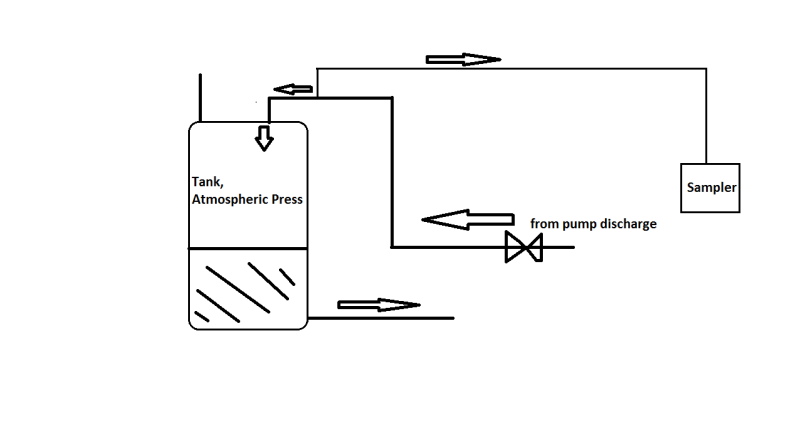Hello all,
I have encountered a situation to which I am not sure what equations apply.
I have a pump discharging to a 4" stainless pipe with several elbows to the top of a tank which is vented atmospheric pressure, and provides suctions to other pumps in downstream processes.
The construction group has installed 1/4" tubing to our sampler via a tap coming out of the top of the 4" stainless pipe immediately before the elbow where it dumps down into the tank. I have attached a rudimentary P&ID, and have isometrics available so I can calculate friction losses in the piping.
How can I tell if I will have flow to the sampler with this arrangement? I do not even know how to calculate if there will be water at the top of the pipe in this arrangement given that it is dumping to the tank immediately downstream; for all I know there will be an air gap here. Should the sample line be installed either at the bottom of the pipe or at a lower point, instead of taking off the highest point in the system? Sampler requires 0.5 gpm.

Thank you!
I have encountered a situation to which I am not sure what equations apply.
I have a pump discharging to a 4" stainless pipe with several elbows to the top of a tank which is vented atmospheric pressure, and provides suctions to other pumps in downstream processes.
The construction group has installed 1/4" tubing to our sampler via a tap coming out of the top of the 4" stainless pipe immediately before the elbow where it dumps down into the tank. I have attached a rudimentary P&ID, and have isometrics available so I can calculate friction losses in the piping.
How can I tell if I will have flow to the sampler with this arrangement? I do not even know how to calculate if there will be water at the top of the pipe in this arrangement given that it is dumping to the tank immediately downstream; for all I know there will be an air gap here. Should the sample line be installed either at the bottom of the pipe or at a lower point, instead of taking off the highest point in the system? Sampler requires 0.5 gpm.

Thank you!
